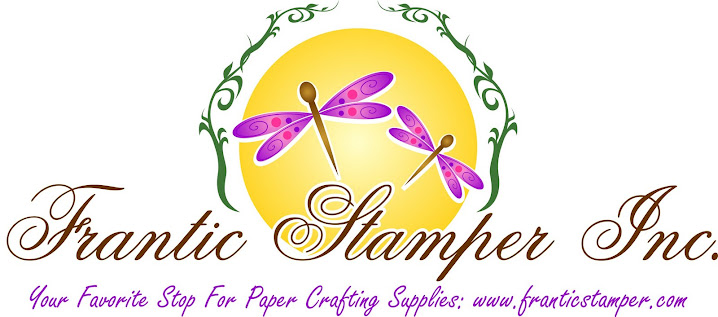
Today we would like to offer some tips for using Copic Markers, available at FranticStamper. These alcohol based markers are a little different to use than other markers, but the results are incredible!
Tip #1
If you have a limited budget (don't we all!) shop for markers based on the types of images you color most often. For example, if you mostly color floral images you will want a different palette than if you mostly color images of people.
But no matter which basic palette you chose, you will want at least two markers (three are recommended) in each color family for blending, one lighter and one darker. For best results, pick markers that are in the same color family(hue), same saturation, and only a few digits apart in value. For example, if you want to color blue violet, you will want possibly a BV00 and a BV04.
Note: the letters on the markers stand for the color family or hue. The first digit is the saturation (lower numbers are more true, higher numbers have more gray in them) and the second digit is the value (higher numbers are brighter).
Tip #2
Chose the right paper for the marker. You want a very smooth, heavy card stock that is NOT clay coated and that won't bleed. Among the recommended card stock is Bazzill Ultra Smooth (BAZ-Sm8-white, $4.50 per pkg of 10 sheets). It allows good coverage with the ink, and blends beautifully. The wrong paper will allow the ink soak in too quickly, making it difficult for the ink to be moved around for blending. Always test your paper before starting your project.
Tip #3
The right stamping ink makes a big difference. We recommend Memento inks for use with Copic markers. The ink dries quickly and will not bleed when colored over with the alcohol ink. We don't recommend Versafine, Distress, or Memories inks; they tend to bleed. We STRONGLY recommend you avoid solvent inks such as Staz-on with Copic markers. Not only will the alcohol in the marker smudge the ink, but the marker tip will pick up some of the ink, and the tip will need to be replaced.
Tip #4
For an outlining marker we recommend Memento markers or the Copic Multiliner pens. Frantic stamper carries Memento markers in every color available. We do not at this time, though, carry the multiliners. We strongly recommend staying away from other brands of permanent markers if coloring with Copics. The ink from those permanent markers could smudge, and potentially damage the tips of the Copic markers.
Tip #5
There are PDF charts for the various colors of pens available at the Copic site. Print a chart on the paper you plan to use and then color a small swatch of the marker in the appropriate area of the chart. This chart will help you to be sure that you are choosing the perfect color for your project.
Tip #6
When coloring with the Copics, start with the lightest color first and color over the entire region that you plan to color. Color in very small circles to avoid lines in your coloring. When finished with the first color, add in shadows with the next color. Blend with the lightest marker. Add additional shadow with a darker color if desired. Always blend with the lightest marker.
Tip #7
If your colored image looks splotchy you haven't probably didn't put down enough ink. It is important to lay down enough ink when coloring with the first (base) color to allow the ink to move and blend until smooth.
Tip #8
The "blender" pen does not actually blend color; it MOVES color. If you put a drop of blender solution onto a colored area the color will move to the edges of the drop, getting very light at the center of the drop and dark around the edges. This property of the blending pen is wonderful for cleaning up small areas of stray ink (push the color out of the unwanted area with the chisel tip) or for adding texture to an already colored image. It is NOT, though, wonderful for blending colors. Use a light-valued marker in the appropriate color family for blending.
Tip #9
PRACTICE, PRACTICE, PRACTICE!!! And then practice some more. These markers are different from many of the other color media you may have used in the past. They are fine-art markers that do have a learning curve. But what could possibly be more fun than coloring lots of your favorite images? These markers are an investment, both of money and of time, but the results they produce are well worth both!

No comments:
Post a Comment